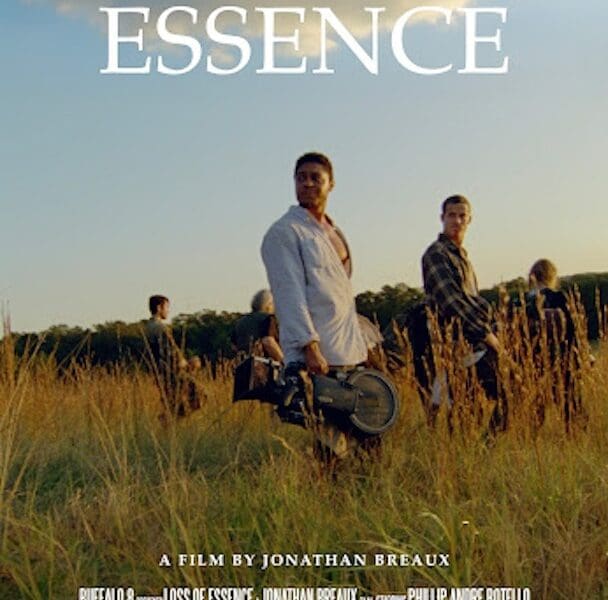
Sound Design Expert Explains The Science of Sound: How Sound Design Influences Viewer Perception
In the dazzling world of film, TV, and video, audiences are immediately drawn to the visible spectacles: the charismatic cast bringing characters to life, the compelling script weaving intricate stories, and the breathtaking locations that set the stage for these narratives. However, sound design is an often understated but critical element that binds these threads together. The invisible yet powerful force elevates a scene from merely being seen to being truly felt, ensuring it does not lose its essence.
For David Zang, an award-winning sound designer and Director of Audio Production at AsparTateSounds LLC, his role with sound is more than just bringing clarity to dialogue or intensifying a soundtrack; it is letting the audience grasp the whole narrative and adding another layer to the overall viewing experience.
Zang worked on different sound designs for films, documentaries, and TV shows, such as the 2021 Oscar-qualified ‘Harper’ (2021); his most recent, ‘An Egypt Affair’ (2023), which premiered in Rome last month; ‘Amazon Queen’ (2021), which took home a total of 120 awards, three for the sound department, and the Best Sound Design awards from the 2021 Rome International Movie Awards; ‘NIGERIA: Consolidating Democracy and National Unity’ (2022) that premiered during prime hours of the Nigerian national TV channel; ‘Top Gun, Maverick’ (2023) in collaboration with EIKON Group, which earned him a spot in honor of nomination for The American Council of the Blind’s People’s Choice Award; and many others. This portfolio of highly-recognized projects testifies to his craftsmanship that resonates with audiences and critics worldwide.
Striking the Right Balance in Sound Design
The intricate art of sound design in film and television is a balance between science and creativity, where technical prowess meets imaginative storytelling. At its core, sound design encompasses various technical aspects such as sound mixing, editing, and the careful selection and integration of sound effects. Each of these elements plays a pivotal role in constructing the auditory landscape of a production.
As Zang mentions in his article on Music Connection, “Sound design requires a delicate balance between effects and music. While the effects will provide the detail, music sets the emotional tone, providing rich texture in both documentary and feature productions.” This meticulous process involves not just the proper placement of sounds but also their manipulation to fit the context and emotion of the scene.
The psychological impact of sound on viewer perception and mood is profound. Zang explains that different sounds evoke distinct emotional responses from the audience. He adds, “The right sound at the right moment can make hearts flutter or race. It’s about tapping into the viewer’s subconscious and steering their emotional journey through the narrative.”
This aspect of sound design is not just about auditory aesthetics; it’s a strategic tool to enhance storytelling, guiding the audience’s emotional response and deepening their engagement with the content.
The Science Behind Audio Design
Deepening audience engagement with content through sound design is a nuanced and sophisticated process. Zang emphasizes that when sound design is executed with precision and creativity, it becomes a powerful tool for immersing viewers in the story, enhancing their emotional connection with the characters and plot.
He adds, “Sound design is the undercurrent of emotion in any film. It pulls viewers into the heart of the story, making them feel every twist and turn as if they were there.”
In his internationally acclaimed work on ‘Amazon Queen,’ this philosophy is vividly brought to life. The meticulous sound design in the film plays a pivotal role in transporting the audience into the depths of the jungle, not just as passive observers but as participants in a culturally and environmentally rich narrative.
From the beginning until the jungle’s depths, the audience’s auditory journey is meticulously crafted to create an immersive and memorable authentic experience.
For Zang, the film’s sound design deepens the narrative. It echoes real-world issues of cultural exploration versus exploitation, prompting viewers to reflect on these themes long after the film has ended.
Aside from this, Zang’s role as the Supervising Sound Editor and Re-recording Mixer in the 2022 documentary “The Essential Muhammadu Buhari” is also a testament to his belief in the power of sound design to bring depth and dimension to real-life stories.
Zang’s sound design expertise in this documentary helped shape the audience’s perspective on President Buhari’s life and philosophy. He notes, “Sound is a gateway to authenticity in a documentary. My role was to create an auditory journey that reflected the true essence of President Buhari’s life, beyond the facade of power and politics.”
His meticulous work in the documentary played a pivotal part in portraying the president as a political figure and a person with a rich history and a profound philosophy, as narrated by those closest to him.
Sound Design as Complement to Visual Narrative
The sound design industry is set to continue its upward trajectory. The Motion Picture Sound Editor (MPSE) Associate Member is optimistic about the future, noting the potential for new technologies further to revolutionize the field. However, despite this, Zang acknowledges that not everyone views sound design with the same reverence. He understands that some may view visuals as the primary driver of storytelling in film and TV.
That is why, for him, it is not about taking the first place but using his medium to elevate the viewing experience. Just like how the delivery of lines and the actor’s portrayal are essential, the way dialogue is mixed, music choice, and the strategic use of silence can significantly influence how viewers perceive and connect with the content.
By expertly balancing these elements and complementing the narrative and directions, Zang aims to reduce unnecessary miscommunication in post-production and create a more seamless and efficient workflow for a more striking, engaging masterpiece.
Zang shares in Music Connection, “A constant flow, a give and take, is an essential element in strengthening the work for the most powerful audience impact.”







